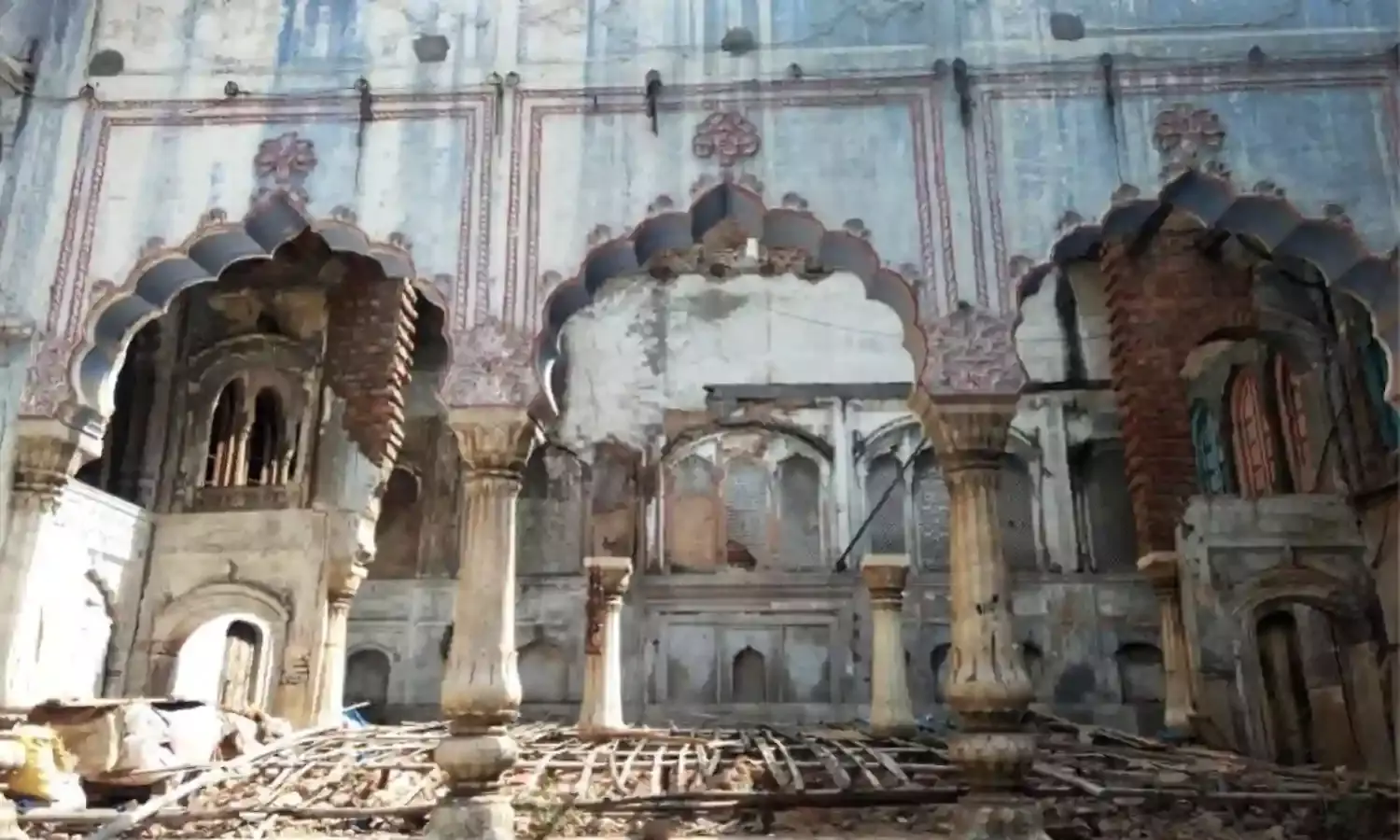Lost Havelis Survive with a Commercial Makeover
Changing hands and names, and purpose

As I walk through the dingy lanes of Old Delhi, conspicuous are the crafted realms of kings. The havelis or mansions of the aristocracy in the 18th and 19th centuries now have a different fate. From accommodating the comfort of their owners, they stand now as business hubs generating revenue.
Haveli Dharampura, which dates back to the 19th century, is now named Goel ki Haveli and is owned by Vijay Goel, former union minister of youth affairs and sports. Left in a shambles, the haveli was restored over six years and is now a well appointed hotel.
(Haveli Dharampura)
There are more foreigners here than Indians. Vanita, a guest from Texas, prefers this place over other hotels because of its historical touch. “I like history and the feeling that for years before people have lived here,” says Vanita.
Visitors can also look around the haveli hotel for a ticket that costs 350 rupees, according to the manager.
Goel’s neighbours are a bit upset about the mansion being run as a hotel. Rajiv Jain, the owner of a grocery shop standing right in front of the hotel says, “From the time the hotel started operations my business has gone down, as they have barred me from selling several products.”
According to residents, the mansion was occupied by a Jain family for a hundred years. With time they became unemployed, the story goes, and had to leave the place as they could not maintain it further. Historical references suggest that the haveli dates from 1887.
(A haveli in Naughara gali)
Naughara Gali, an alley where nine colourful Jain havelis were built in the 18th century, now lies bereft. Those homes are survived by a warehouse and a few renters.
Atam Prakash Agarwal, a resident of one of the nine houses, thinks the place lost its original inhabitants due to the inconvenience of living here in modern times. “People had no space to park their vehicles, reducing their access to transportation. They lacked a free space for gardens and fresh air.”
He adds, “If a fire catches in this area, there is no way fire engines or an ambulance can come to the rescue, because of the congested lanes.”
(Naughara gali)
According to Agarwal the government ignored the importance of this heritage. “It’s expensive to maintain these mansions and the government did not come up with any aid. The situation obliged the owners to sell their place for money and get rid of it.”
Neglect by the people and the government has led to the present condition of Old Delhi, Agarwal believes.
The consequent emigration also hit people hard at the Haider Quli Khan ki Haveli, which was named after the Mughal commander of artillery under the emperor Muhammad Shah, who reigned from 1719 to 1748.
“Earlier, 150 families resided here,” Agarwal says, “all of whom migrated, leaving behind only 6-7 families. Now it has turned into a residential and commercial complex with offices, restaurants, shops and warehouses around it.”
Another of the nine houses at Naughara is a jewellery shop, whose owner is proud of the fact that despite running a shop he did not alter the building’s architecture which is the beauty of the place.
“We need more thoughtful people, who are saving the crumbling havelis,” says Manika, a visitor at the Walled City Café in Old Delhi. She visits the place because it was once a bustling haveli.
A guest from France, unaware of the history of the place, became very excited on knowing that it was once a mansion and is now a cafe hosting parties and events.
(Walled City Cafe)
“As long as they don’t destroy such places to commercialise them, it’s good to have such a place,” says the guest who wanted to be anonymous.
It is said that Haveli Khazanchi in Dariba Kalan once belonged to the khazanchis or treasurers of the Mughal empire, and that a tunnel connected the haveli to the Red Fort so money could be transferred safely to the royal coffers.
The haveli today stands in a wrecked condition, with pillars on the floor and its arches dismantled. Leftover room in the haveli is rented out for a mere 5000 per month. Kamlesh Sachdeva, a resident, says “Now this place is being used by everybody for an amount which once used to be a status symbol for the rich.”
A resident here, Sanjay (name changed) shares that this place charges less rent than others, which is why he’s staying here. “Otherwise this place is uncomfortable. The government also doesn’t even peep inside to help restore it.”
(Khazanchi ki haveli)
Then there is the story of Bhagirath Palace, once the Lloyd’s Bank building and also, for a while, the Delhi Bank building. It was originally a colonial-style palace built by the famous Begum Samru, a Kashmiri dancing girl who married a European mercenary named Walter Reinhardt.
By 1857 Begum Samru’s palace had been converted into a bank.
During the Revolt the bank manager and his family tried to resist when a mob attacked, but were overpowered and killed.
The placard in front of the building reads, ‘The bank building was bought over by a Lala Bhagirath in 1922.’ Later, it became home to a series of hardware shops, and the name Bhagirath Palace came to be applied not just to the building, but the area around.
(Bhagirathi Palace)
I discuss the changes with Harish Jain, who is a daily commuter through these lanes and has stayed all his life within the walled city of Shahjahanabad.
“In the race for development people forget their values. Earlier, houses were known by the names of the owners and not by numbers. People were supportive in bad times, unlike now when everything is about commercial smiles.”
(Haveli in Naughara)
(Haveli in Naughara)
(Haveli Khazanchi)
(Haveli Khazanchi)
(Haveli Dharampura)
(Haveli Dharampura)



